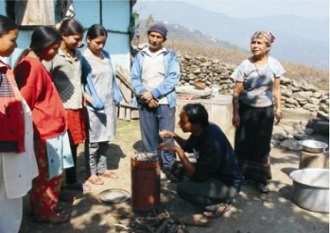Sci Total Environ. 2011 Jan 31.
Global burden of disease as a result of indoor air pollution in Shaanxi, Hubei and Zhejiang, China.
Mestl HE, Edwards R. CICERO Center for International Climate and Environmental Research, PO Box 1129 Blindern, N-0318 Oslo, Norway.
Indoor air pollution in developing countries is a major global health problem, yet estimates of the global burden of disease vary widely and are associated with large uncertainty. The World Health Organization uses the fuel based approach to estimate 1.6million premature deaths globally each year associated with exposure to indoor air pollution, of which 420000 are in China.
The fuel based approach uses a ventilation factor to account for differences in indoor air concentrations and exposures in different parts of the world based on regional differences in stove technology. In China this approach assumes that flues eliminate the majority of indoor air pollution, with a ventilation factor of 0.25. To account for historic exposure leading to current disease patterns the ventilation factor was adjusted to 0.5 for adult health endpoints.
Measurements in three Chinese provinces, Shaanxi, Hubei and Zhejiang, however, show that high PM(4) concentrations are present in kitchens and living rooms even with stoves with flues as a result of multiple stove and flue use. Comparison of Indian and Chinese indoor air concentrations suggests more appropriate ventilation factors in the range 0.76-1.0 for women and children, and 1.0 for men. Premature mortality in the three provinces using these estimates would be closer to 60600, rather than current estimates of 46000.
With the addition of cardiovascular diseases these estimates would increase by 92000. Pollutant based estimates using measured indoor air concentrations and combined with dose-response estimates would imply a burden of disease of 157800 premature deaths including cardiovascular diseases, a tripling of current estimates.



